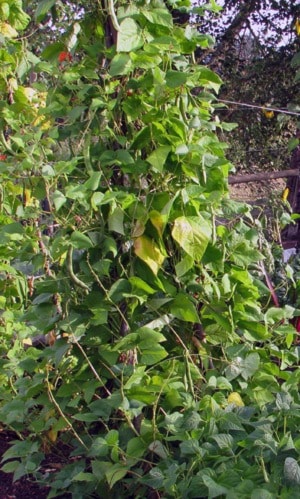Look around. Autumn is resplendent with colour.
The leaves on the deciduous trees are changing hue as the sap stops flowing. Many will drop to the ground when they die … greatly helped by November winds and the first frosts.
But looking around, you may notice a few trees here and there with decidedly dead leaves still clinging to their branches. These are called marcescent (mar-SES-ent) leaves. Marcescent is an adjective meaning “withering without falling off.”
Shorter days and colder weather tell trees to stop sending nutrients, or food, to the leaves. Normally … when the food supply stops, a very thin layer is formed in the leaf stem where it attaches to the branch. This is called the separation layer.
The stem becomes soft and weak at that spot. Soon after, the leaves start to fall.
Marcescent leaves, however, do not form a separation layer. These dead leaves stay on the tree all winter, and they have two very good reasons for doing so.
First, they guard against disease and infection. Sometimes when the leaves fall off a tree, infection sneaks into the open spot where the leaf had been.
But when the leaves stay on the tree, there are no bare spots. Disease and infection cannot attack the tree.
Second, marcescent leaves protect the tender new leaf buds in spring.
Deer, elk and other grazing animals are very hungry after winter. They adore fresh green shoots to eat, so any withered and dead-looking leaves present a very unappetizing repast to the foraging ungulates.
When the time is right in the spring, newly growing leaf buds will push the old marcescent leaves off the branch. And in no time at all, the tree will be freshly green once again.
A tree full of dead, brown leaves may not be the gardener’s first choice of a desirable plant for winter-interest … but perhaps the tree’s ability to defend itself organically from disease infection is worth extra brownie points.
• • •
Ever wonder how vines wrap themselves around something?
This phenomenon is caused by a vine’s growing tendril doing a circular movement in slow motion until such time as it touches something it can cling to … and it can be anything.
There are some scientists who believe the growing tip of a vine is able to find a support by sensing airborne hormones.
Believable or not … however the vine finds one … once the tendril comes into contact with a suitable support, the cells on the inside of the growing tip shorten their length and move up close to one another while the cells on the outside edge of the tendril grow longer.
This cellular action is what causes the vine to coil around the support …either in one direction or another.
But all vines wrap around their support in a single direction. Try to force a vine … any vine … to grow in the wrong direction, and it will untwine itself and grow in its preferred behaviour.
Most vines actually have a tendency to wrap themselves around a support in a counter-clockwise rotation … or to the right. But there are some who twine clockwise, or left spiral … a very good way of telling different species within a plant family apart.
For instance … and most of you have probably heard of this differentiation … the Chinese wisteria vine, Wisteria sinensis, spirals to the right. Japanese wisteria, Wisteria floribunda, always spirals to the left.
But how many of you have noticed that pole beans spiral counter-clockwise while runner beans wrap themselves clockwise? You didn’t? You were probably too busy picking and eating your beans, weren’t you?
Leslie Cox co-owns Growing Concern Cottage Garden in Black Creek. Her column appears every second Friday.
